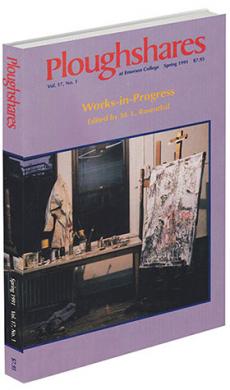rev. of Winged Words: American Indian Writers Speak by Laura Coltelli
Professor Laura Coltelli of the University of Pisa has devoted many years to the oral and written literature, and the varied culture, of American Indians. She now brings us a revealing volume of interviews with eleven contemporary Indian writers. Six are women: Paula Gunn Allen, Louise Erdrich, Joy Harjo, Linda Hogan, Wendy Rose, and Leslie Marmon Silko. The men are Michael Dorris (Ms. Erdrich's husband, who shares an interview with her), N. Scott Momaday, Simon Ortiz, Gerald Vizenor, and James Welch.
In my brief space here, I want to urge attention to the invaluable service rendered by
Winged Words. For the uninitiated (i.e., most of us, including most literati), these interviews are full of surprises. They at once dissolve stale images of "the" Indian and "his" mentality and culture. The comments of Ms. Allen alone, whose descent has Laguna, Sioux,
Lebanese, Jewish, and other transatlantic strains, do so at once. She points out, for instance, that while "some forty thousand American Indian women have advanced degrees," the status of Indian women in general has been degraded abominably from its former high dignity. Again, she and others remind us that not only are Indian cultures themselves divergent, but many of the writers, like her, have mixed tribal and national backgrounds. Louise Erdrich's, for example, is Chippewa and German; Wendy Rose's is Hopi, Miwok, and Scotch-Irish; Gerald Vizenor's is Chippewa and French. All have university degrees, most beyond the B.A.; and when they talk about literature they have absorbed, it includes a wide variety of English-language and European as well as Indian sources.
In short, they're in one sense a typically American multicultural and diverse yet ethnically self-conscious complex of groups, with a sense of isolation born of long memories of oppression and prejudice. Like, say, African Americans, Chicanos, or Jews, they have sensibilities shaped both by strong familial influences, linguistic and ritual, and willy-nilly, by the dominant culture. At the same time, as Professor Coltelli puts it, they have "a story of their own with no parallel in world literature." This may not be altogether true — but it almost seems so by the time one has read the authors' comments on their whole situation, let alone those on such subjects as the meaning of "story" in the oral tradition, issues of translation, silence concerning "sacred power," and the trickster-figure's persistence in modern work. The writers assembled in this volume indignantly reject attempts by anthropologists, critics, novelists, and assorted sentimentalists peering at them
from outside to categorize and explain them.
These interviews, together with the notes, bibliography, and occasional very welcome quotations read to Dr. Coltelli by the writers, make a splendid opening into an impressive creative world too long unknown to most of us.
—
M. L. Rosenthal

